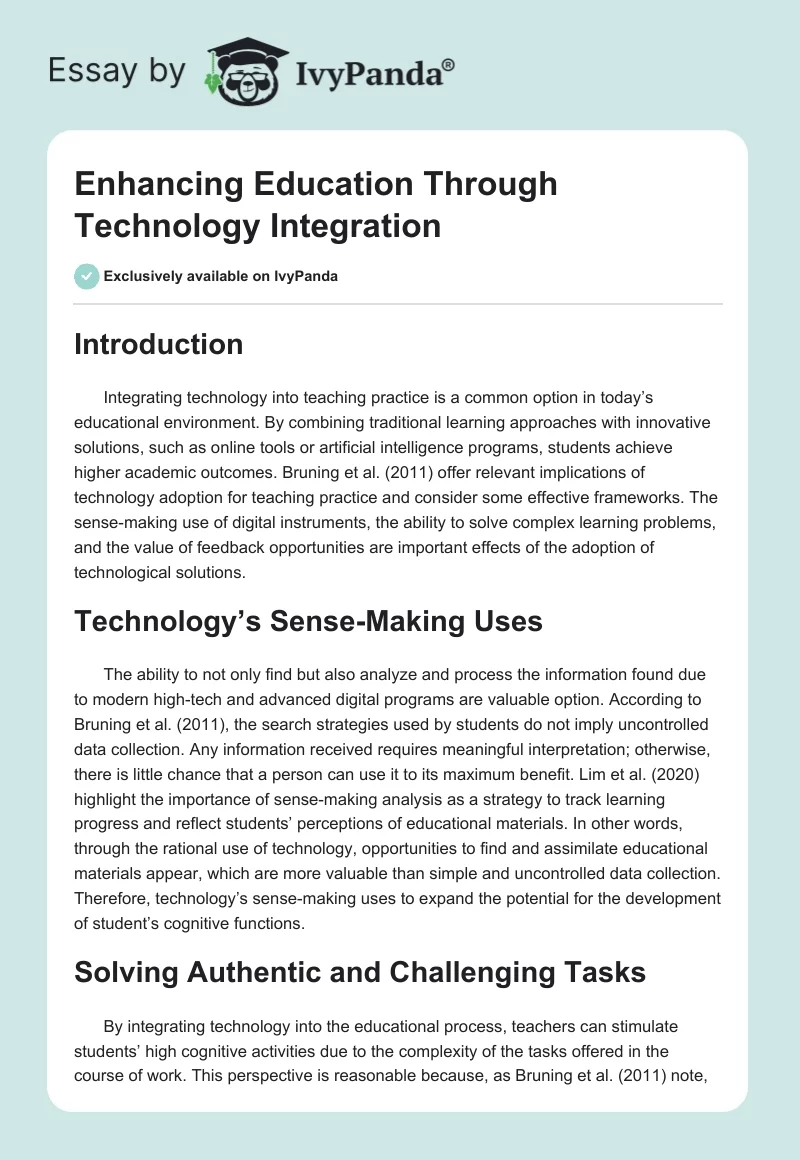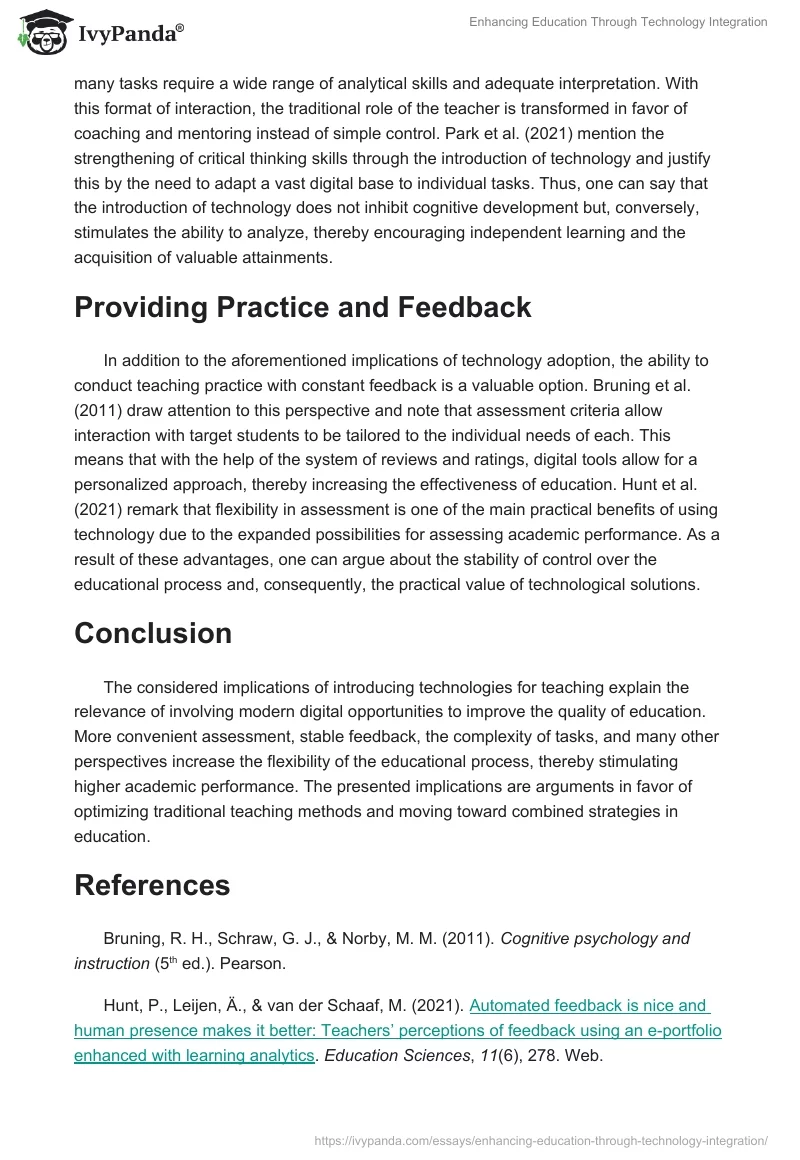Introduction
Integrating technology into teaching practice is a common option in today’s educational environment. By combining traditional learning approaches with innovative solutions, such as online tools or artificial intelligence programs, students achieve higher academic outcomes. Bruning et al. (2011) offer relevant implications of technology adoption for teaching practice and consider some effective frameworks. The sense-making use of digital instruments, the ability to solve complex learning problems, and the value of feedback opportunities are important effects of the adoption of technological solutions.
Technology’s Sense-Making Uses
The ability to not only find but also analyze and process the information found due to modern high-tech and advanced digital programs are valuable option. According to Bruning et al. (2011), the search strategies used by students do not imply uncontrolled data collection. Any information received requires meaningful interpretation; otherwise, there is little chance that a person can use it to its maximum benefit. Lim et al. (2020) highlight the importance of sense-making analysis as a strategy to track learning progress and reflect students’ perceptions of educational materials. In other words, through the rational use of technology, opportunities to find and assimilate educational materials appear, which are more valuable than simple and uncontrolled data collection. Therefore, technology’s sense-making uses to expand the potential for the development of student’s cognitive functions.
Solving Authentic and Challenging Tasks
By integrating technology into the educational process, teachers can stimulate students’ high cognitive activities due to the complexity of the tasks offered in the course of work. This perspective is reasonable because, as Bruning et al. (2011) note, many tasks require a wide range of analytical skills and adequate interpretation. With this format of interaction, the traditional role of the teacher is transformed in favor of coaching and mentoring instead of simple control. Park et al. (2021) mention the strengthening of critical thinking skills through the introduction of technology and justify this by the need to adapt a vast digital base to individual tasks. Thus, one can say that the introduction of technology does not inhibit cognitive development but, conversely, stimulates the ability to analyze, thereby encouraging independent learning and the acquisition of valuable attainments.
Providing Practice and Feedback
In addition to the aforementioned implications of technology adoption, the ability to conduct teaching practice with constant feedback is a valuable option. Bruning et al. (2011) draw attention to this perspective and note that assessment criteria allow interaction with target students to be tailored to the individual needs of each. This means that with the help of the system of reviews and ratings, digital tools allow for a personalized approach, thereby increasing the effectiveness of education. Hunt et al. (2021) remark that flexibility in assessment is one of the main practical benefits of using technology due to the expanded possibilities for assessing academic performance. As a result of these advantages, one can argue about the stability of control over the educational process and, consequently, the practical value of technological solutions.
Conclusion
The considered implications of introducing technologies for teaching explain the relevance of involving modern digital opportunities to improve the quality of education. More convenient assessment, stable feedback, the complexity of tasks, and many other perspectives increase the flexibility of the educational process, thereby stimulating higher academic performance. The presented implications are arguments in favor of optimizing traditional teaching methods and moving toward combined strategies in education.
References
Bruning, R. H., Schraw, G. J., & Norby, M. M. (2011). Cognitive psychology and instruction (5th ed.). Pearson.
Hunt, P., Leijen, Ä., & van der Schaaf, M. (2021). Automated feedback is nice and human presence makes it better: Teachers’ perceptions of feedback using an e-portfolio enhanced with learning analytics. Education Sciences, 11(6), 278. Web.
Lim, L. A., Dawson, S., Gašević, D., Joksimović, S., Fudge, A., Pardo, A., & Gentili, S. (2020). Students’ sense-making of personalized feedback based on learning analytics. Australasian Journal of Educational Technology, 36(6), 15-33. Web.
Park, C. S. Y., Haejoong, K. I. M., & Sangmin, L. E. E. (2021). Do less teaching, do more coaching: Toward critical thinking for ethical applications of artificial intelligence. Journal of Learning and Teaching in Digital Age, 6(2), 97-100.


